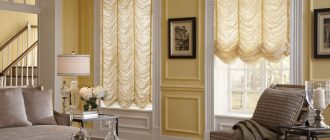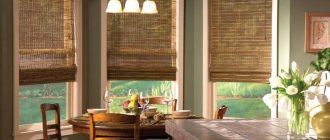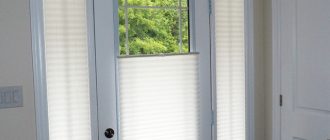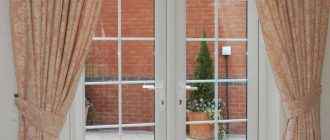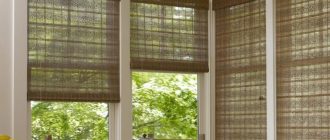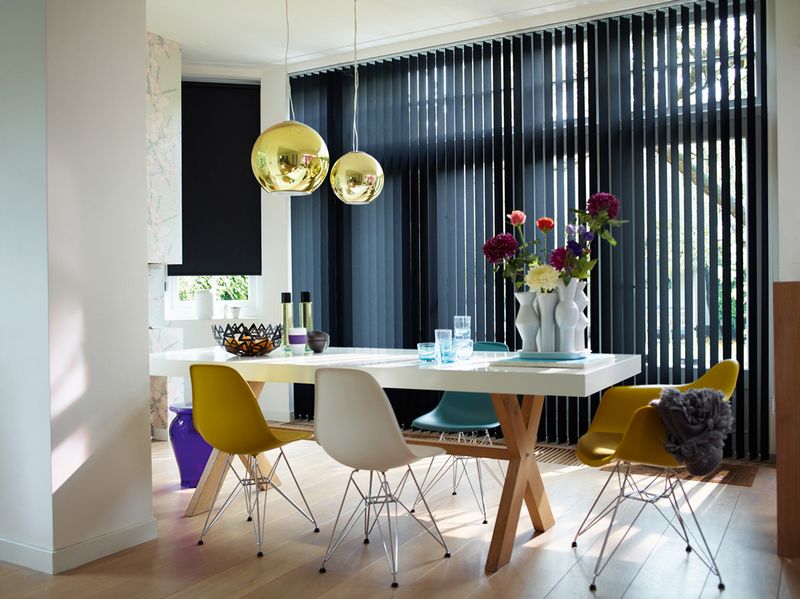
All About Vertical Blinds
When it comes to covering your windows, vertical blinds are a popular choice for many homeowners. Not only do they provide privacy and control the amount of sunlight that enters a room, but they also add a touch of style to any interior.
Unlike curtains or shades, vertical blinds are designed with individual slats that can be easily adjusted to let in or block out light. This makes them a versatile option for those who want to have control over the amount of natural light in their space.
Vertical blinds are especially useful in rooms with large windows or sliding glass doors, as they can be easily opened and closed to provide optimal light control. Additionally, their sleek design and wide range of materials and colors make them a popular choice for modern and contemporary interiors.
Whether you’re looking for a solution to enhance privacy, block out sunlight, or simply add a stylish element to your space, vertical blinds are an excellent choice. Their functionality and versatile design make them a practical and attractive option for any window in your home.
All About Vertical Blinds: The Ultimate Guide
Vertical blinds are a popular choice for window coverings in many interior designs. They offer a practical and stylish solution to controlling privacy, sunlight, and adding a touch of elegance to any room.
Vertical blinds are a type of window covering that consists of slats that run vertically along a track. They can be made of various materials such as fabric, vinyl, or wood. The slats can be adjusted to allow varying degrees of light and privacy into the room.
One of the key advantages of vertical blinds is their versatility. They can be used in different spaces, from bedrooms to living rooms to office spaces. They are especially popular for covering large windows or sliding glass doors.
Vertical blinds offer excellent control over privacy and light. By simply adjusting the slats, you can create a balance between natural sunlight and privacy. This is especially useful in rooms where you want to enjoy natural light while maintaining your privacy.
In addition to controlling light and privacy, vertical blinds have the added benefit of acting as insulators. They can help to keep your home cool in the summer and warm in the winter by effectively blocking out drafts and reducing heat transfer.
Vertical blinds are also a great choice for those who are sensitive to allergies. Unlike curtains, vertical blinds do not collect as much dust and allergens. They are easier to clean and maintain, making them a more hygienic option for those with allergies.
When choosing vertical blinds, it’s important to consider the color and material that will best suit your interior design. There are various options available, from neutral shades that blend in with the surrounding decor to bold colors that make a statement.
Installing vertical blinds is a relatively easy process. They can be mounted inside the window frame or on the wall above the window. Most vertical blinds come with a manual control mechanism, but there are also motorized options available for added convenience.
In summary, vertical blinds are a versatile and practical choice for window coverings. They offer control over privacy and sunlight, help to insulate your home, and are easy to clean. With a wide range of materials and colors to choose from, vertical blinds can complement any interior design style.
Benefits of Vertical Blinds
Vertical blinds are a popular choice for covering windows, providing a range of benefits that make them a practical and stylish choice for any interior.
- Versatile and Functional: Vertical blinds can be easily adjusted to control the amount of light and privacy in a room. With a simple twist of the wand or pull of the cord, you can tilt the slats to let in more or less light, or draw the blinds completely to block out the sun.
- Excellent Light Control: The vertical design of these blinds allows for precise control over the direction and amount of light that enters a room. Whether you want to diffuse harsh sunlight or enhance natural light, vertical blinds give you the flexibility to achieve the perfect ambiance.
- Improved Privacy: Vertical blinds are an excellent choice for maintaining privacy in your home or office. By adjusting the slats, you can regulate the visibility from the outside. It’s a simple yet effective way to keep prying eyes away without sacrificing natural light.
- Easy Maintenance: Compared to curtains or shades, vertical blinds are easy to clean and maintain. They are less prone to dust, mold, and allergens, making them a healthier choice for people with respiratory issues. Regular dusting or occasional wiping will keep your vertical blinds looking fresh and new.
- Space-Saving Design: Vertical blinds are an ideal choice for smaller spaces or rooms with limited floor area. They are designed to stack neatly to the side of the window, maximizing the use of space. This feature makes them a popular option for sliding glass doors or large windows.
In summary, vertical blinds offer a range of benefits, including versatility, excellent light control, improved privacy, easy maintenance, and a space-saving design. Consider installing vertical blinds in your home or office for a practical and stylish window covering solution.
Types of Vertical Blinds
Vertical blinds are a popular choice for covering windows and providing both shade and privacy in interior spaces. They consist of long, vertical slats that can be adjusted to control the amount of sunlight that enters a room. Here are some different types of vertical blinds:
- Standard Vertical Blinds: These blinds are made of fabric or vinyl slats that can be rotated to allow varying amounts of light to pass through. They are a versatile option that can complement any interior decor style.
- PVC Vertical Blinds: PVC vertical blinds are a durable and cost-effective choice. They are resistant to moisture and are easy to clean, making them suitable for kitchens, bathrooms, and other high-moisture areas.
- Blackout Vertical Blinds: If you need to block out sunlight completely, blackout vertical blinds are the way to go. They are made with special light-blocking materials that prevent any light from passing through, allowing for total darkness and privacy.
- Fabric Vertical Blinds: Fabric vertical blinds offer a softer and more elegant look compared to vinyl or PVC options. They are available in a wide range of colors and patterns, making it easier to match them with your interior decor.
- Faux Wood Vertical Blinds: If you love the look of wood but want the practicality of vertical blinds, faux wood vertical blinds are a great option. They mimic the appearance of real wood but are more affordable and resistant to moisture.
Vertical blinds come in various widths and lengths, allowing you to find the perfect fit for your windows. Consider the material, color, and style that best suits your needs and personal preferences to enhance the look and functionality of your space.
Choosing the Right Vertical Blinds for Your Space
When it comes to covering your windows, vertical blinds are a popular choice. They not only provide privacy but also allow you to control the amount of sunlight that enters your space. Additionally, vertical blinds can add a touch of style to your interior, complementing your existing curtains or shades.
Here are some factors to consider when choosing the right vertical blinds for your space:
- Size of the window: Measure the size of your window accurately before selecting the vertical blinds. This will help you choose the right width and height of the blinds to ensure proper coverage.
- Material: Vertical blinds come in various materials, including fabric, vinyl, and aluminum. Consider the durability, light-blocking abilities, and ease of maintenance when selecting the material for your blinds.
- Color and design: Vertical blinds are available in a range of colors and designs. Choose a color that complements your interior and enhances the overall aesthetic appeal of your space.
- Light control: Decide how much sunlight you want to filter into your room. Some blinds offer better light control options than others, allowing you to adjust the slats to regulate the amount of sunlight that enters your space.
- Privacy: Consider the level of privacy you require. If privacy is a priority, select blinds with thicker slats or opt for fabric blinds that offer better privacy.
- Operating system: Different vertical blinds come with different operating systems. Choose an operating system that suits your convenience, whether it’s a corded system, wand control, or motorized blinds.
It’s also important to consider your budget when selecting vertical blinds. Set a budget and explore different options within that range to find the perfect blinds that meet your requirements.
Remember, vertical blinds can transform the look of your space while providing functionality. Take your time to research and compare options before making a final decision. With the right choice of vertical blinds, you can create a stylish and comfortable environment in any room.
How to Measure for Vertical Blinds
When it comes to covering your windows, vertical blinds are a popular choice. They offer a stylish and practical solution for controlling sunlight, privacy, and the overall interior look of a room. Before you make a purchase, it’s important to know how to measure your windows accurately to ensure a perfect fit for your vertical blinds.
Step 1: Measure the width
Start by measuring the width of your window frame. Use a metal measuring tape for accuracy. Measure the width at the top, middle, and bottom of the window, and record the widest measurement. This will ensure that your vertical blinds will fit properly and allow for easy operation.
Step 2: Measure the height
Next, measure the height of your window frame. Again, use a metal measuring tape to ensure precision. Measure the height on the left, right, and center of the window, and record the tallest measurement. This will determine the length of the vertical blinds and provide adequate coverage for your window.
Step 3: Consider mounting options
When measuring for vertical blinds, it’s important to consider the mounting options. There are two common methods: inside mount and outside mount. An inside mount fits the blinds within the window frame, while an outside mount fits the blinds outside the window frame, covering a larger area. Measure accordingly based on your preferred mount option.
Step 4: Finalize your measurements
Once you have measured the width, height, and determined the mounting option, double-check your measurements to ensure accuracy. It’s always a good idea to measure twice to avoid any mistakes. Take note of your measurements and keep them handy when shopping for vertical blinds.
Step 5: Consult a professional
If you’re unsure about measuring for your vertical blinds or simply want to ensure accuracy, it’s always a good idea to consult a professional. They can provide expert advice and assistance in measuring your windows correctly and help you choose the best vertical blinds for your needs.
In conclusion, measuring your windows accurately is crucial when it comes to purchasing vertical blinds. Be sure to follow the steps above to ensure a perfect fit and a stylish addition to your interior.
Installing Vertical Blinds: A Step-by-Step Guide
Vertical blinds are a popular choice for window coverings due to their versatility and practicality. They allow you to control the amount of sunlight entering your interior space while providing privacy when needed. Installing vertical blinds is a straightforward process that can be done by following these simple steps:
- Measure your window: Start by measuring the width and height of your window. This will help you determine the size of the vertical blinds you need to purchase.
- Select the right blinds: Choose the material, color, and style of vertical blinds that suit your interior decor and preferences.
- Assemble the blinds: Follow the manufacturer’s instructions to assemble the vertical blinds. This usually involves connecting the slats, attaching the control mechanism, and mounting brackets.
- Mount the brackets: Use a tape measure and level to mark the desired position of the brackets on the wall or window frame. Make sure the brackets are evenly spaced and aligned. Then, drill pilot holes and attach the brackets using screws.
- Hang the blinds: Insert the headrail of the blinds into the brackets and secure them in place. Ensure that the blinds are hanging straight and level.
- Test the operation: Open and close the blinds to check if they are functioning smoothly. Adjust the control mechanism if necessary.
- Optional: Add finishing touches: Depending on your preference, you may choose to add valances or curtains to enhance the appearance of your vertical blinds.
By following these steps, you can easily install vertical blinds and enjoy the benefits they provide, such as light control, privacy, and a stylish addition to your interior.
Maintaining Vertical Blinds: Tips and Tricks
Vertical blinds are a popular choice for window coverings, providing both style and functionality to any interior. However, they can accumulate dust and dirt over time, which can affect their appearance and performance. Proper maintenance is essential to keep your vertical blinds looking their best and functioning smoothly. Here are some tips and tricks to help you maintain your vertical blinds:
- Regular Cleaning: To keep your blinds free of dust and dirt, it is important to clean them regularly. Use a vacuum cleaner with a brush attachment or a duster to remove any loose dirt and dust from the slats. You can also wipe them down with a soft cloth or sponge dampened with water and mild soap.
- Deep Cleaning: Occasionally, your blinds may require a more thorough cleaning to remove stubborn stains or grime. In this case, you can remove the blinds from the window and soak them in a tub filled with warm water and mild detergent. Gently scrub the slats with a soft brush or sponge, rinse thoroughly, and allow them to dry completely before reinstalling.
- Avoid Excessive Sunlight: Direct sunlight can fade and damage the fabric or vinyl of your vertical blinds. To prevent this, consider installing window shades or curtains to block out the sunlight during the hottest parts of the day. This will not only protect your blinds but also help to keep your interior cool and comfortable.
- Repair or Replace: Over time, the cords, chains, or wand mechanisms of your vertical blinds may wear out or break. If this happens, it is important to repair or replace them promptly to ensure smooth operation. You can find replacement parts online or contact a professional for assistance.
- Prevent Tangles: To avoid tangling or misalignment of the slats, make sure to open and close your blinds gently and evenly. Do not force the blinds to move if they are stuck or resistant, as this can cause damage. Instead, inspect the mechanisms or consult a professional to fix any issues.
By following these tips and tricks, you can maintain your vertical blinds and extend their lifespan. Regular cleaning, protecting them from excessive sunlight, and addressing repairs promptly will ensure that your blinds continue to enhance the aesthetic appeal and functionality of your interior.
Frequently Asked Questions about Vertical Blinds
1. What are vertical blinds?
Vertical blinds are a type of window covering that consists of individual vertical slats that can be tilted or pulled to the side to control light and privacy.
2. How do vertical blinds provide privacy?
Vertical blinds can be adjusted to tilt the slats in such a way that they block outside view while still allowing light to enter the room. They are a popular choice for bedrooms and living areas where privacy is important.
3. Can vertical blinds be used with curtains or shades?
Yes, vertical blinds can be paired with curtains or shades for added privacy and style. Adding curtains or shades to the interior of the window can enhance insulation and block even more sunlight.
4. Are vertical blinds suitable for all types of windows?
Vertical blinds are versatile and can be customized to fit a wide range of window sizes and shapes. They can be installed on large windows, sliding glass doors, and even in angled or arched windows.
5. How do vertical blinds control sunlight?
By adjusting the tilt of the slats, vertical blinds can effectively control the amount of sunlight entering the room. When the slats are fully closed, they can block out a significant amount of sunlight, making them a great choice for rooms that receive a lot of direct sunlight.
6. Are vertical blinds suitable for all interior styles?
Vertical blinds come in a variety of materials, textures, and colors, making them suitable for a wide range of interior styles. Whether your interior design is modern, traditional, or eclectic, there are vertical blinds available to complement your décor.
7. Can vertical blinds be motorized?
Yes, vertical blinds can be motorized for added convenience and ease of use. Motorized vertical blinds can be controlled with a remote or a smart home system, allowing you to adjust them with the touch of a button.
| Vertical blinds are outdated | Vertical blinds have evolved and are still a popular choice for many homeowners |
| Vertical blinds are difficult to clean | Most vertical blinds are easy to clean with a vacuum cleaner or a damp cloth |
| Vertical blinds are only suitable for offices | Vertical blinds are versatile and can be used in any room of the house |
| Vertical blinds are expensive | Vertical blinds come in a range of price points to suit different budgets |
8. What are the benefits of vertical blinds?
- Control over privacy and sunlight
- Versatility in fitting different window sizes and shapes
- Enhanced insulation and energy efficiency
- Wide range of style options to complement any interior
- Durability and easy maintenance
9. How can I choose the right vertical blinds for my space?
When choosing vertical blinds, consider factors such as the size and shape of your windows, the level of privacy and sunlight control you desire, and the overall style of your interior. It can be helpful to consult with a professional window treatment specialist to ensure you make the right choice.
10. How do I care for vertical blinds?
Vertical blinds can be easily maintained by regularly dusting or vacuuming the slats. For more thorough cleaning, wiping the slats with a damp cloth or using a mild detergent can help remove any grime or stains.
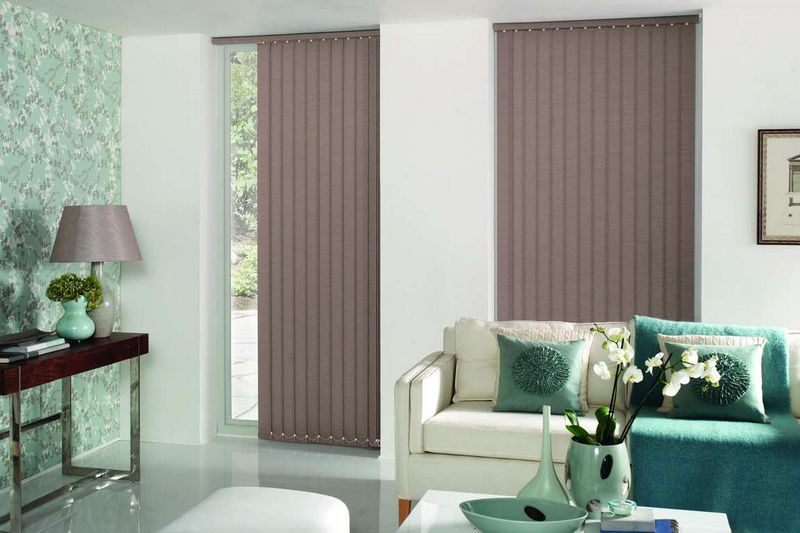
Vertical Blinds vs. Horizontal Blinds: A Comparison
When it comes to choosing blinds for your windows, you have a variety of options to consider. Two popular choices are vertical blinds and horizontal blinds. While both types of blinds serve the purpose of providing privacy and controlling light in a space, they differ in their overall design and functionality. In this article, we will compare vertical blinds and horizontal blinds to help you make an informed decision for your window coverings.
|
|
In summary, both vertical blinds and horizontal blinds are effective window coverings that offer privacy and light control. The choice between the two depends on factors such as window size, personal preference, and interior design style. Consider the specific needs of your space and explore the available options to find the blinds that best suit your requirements.
Vertical Blinds for Windows of Different Shapes and Sizes
When it comes to window coverings, vertical blinds are a popular choice for many homeowners. Not only do they offer privacy and shade from the sunlight, but they also add a touch of style to the interior of any room. Whether you have large windows, small windows, or windows of different shapes, there is a vertical blind option that will suit your needs.
1. Standard Sizes:
If your windows are of standard sizes, you can easily find vertical blinds that will fit perfectly. These blinds come in various widths and heights, allowing you to choose the right size for your windows. Simply measure your windows and select the appropriate blinds from the wide range available in stores.
2. Custom Sizes:
For windows that are not of standard sizes, custom-made vertical blinds are the perfect solution. These blinds are made to measure, ensuring a precise fit for your windows. You can provide the measurements to the blind manufacturer, and they will create blinds that perfectly match the dimensions of your windows.
3. Arched Windows:
If you have arched windows, you can still install vertical blinds to cover them. There are specially designed blinds that are curved to fit the shape of the window. These blinds provide the same amount of privacy and shade as regular vertical blinds, while also enhancing the unique appearance of arched windows.
4. Bay Windows:
Bay windows are another popular architectural feature in homes, and vertical blinds can be customized to fit them as well. With the help of a professional blind manufacturer, you can have vertical blinds that perfectly cover each section of your bay windows. This not only provides privacy but also adds a stylish and cohesive look to the entire bay window area.
5. Skylight Windows:
Vertical blinds are not limited to just traditional flat windows. They can also be used for skylight windows. These blinds are designed to fit the unique shape of skylights and can be operated with the help of a control rod or motorized system. Skylight blinds provide the same benefits as regular vertical blinds, such as controlling light and enhancing privacy.
Conclusion:
No matter the shape or size of your windows, vertical blinds offer a versatile and stylish solution for window coverings. Whether you opt for standard sizes, custom-made blinds, or blinds specifically designed for arched, bay, or skylight windows, vertical blinds can fulfill your needs for privacy, sunlight control, and an attractive interior.
Vertical Blinds for Sliding Glass Doors
When it comes to covering sliding glass doors, curtains may not be the most practical option. They can be difficult to open and close, and they may not provide enough coverage to block out sunlight completely. That’s where vertical blinds come in.
Vertical blinds are a popular choice for sliding glass doors because they offer maximum coverage while still allowing you to control the amount of sunlight that enters your room. They feature long, vertical slats that can be adjusted to let in as much or as little light as desired.
One of the main advantages of vertical blinds is their versatility. They can be easily customized to fit any size of sliding glass door and are available in a wide range of colors and materials. This allows you to match your blinds to the existing interior of your home and create a cohesive look.
In addition to their functionality and aesthetics, vertical blinds also offer several other benefits. They provide privacy, allowing you to enjoy your space without worrying about prying eyes. They also help to insulate your home, reducing heat loss in the winter and heat gain in the summer.
When choosing vertical blinds for your sliding glass doors, there are a few factors to consider. First, you’ll want to decide on the material. PVC is a popular choice for its durability and affordability, while fabric blinds offer a softer, more elegant look.
Next, you’ll need to measure your sliding glass doors to ensure a perfect fit. Most vertical blinds come with a mounting bracket that attaches to the top of the door frame. Measure the width and height of your doors, and select blinds that are slightly wider and longer to ensure full coverage.
Lastly, consider the control options for your blinds. Most vertical blinds come with a wand or chain mechanism that allows you to easily open and close the slats. Some models also offer remote control options for added convenience.
In conclusion, vertical blinds are a practical and stylish choice for covering sliding glass doors. They offer maximum coverage, control over sunlight, and can be customized to fit any interior. Consider investing in vertical blinds to enhance the functionality and aesthetics of your space.
Vertical Blinds for French Doors
French doors are a beautiful addition to any home, offering a stylish and elegant entrance to your outdoor space. However, privacy can sometimes be a concern when it comes to these doors. That’s where vertical blinds come in handy. They provide a practical and attractive solution for covering your French doors.
Vertical blinds are designed specifically for tall and wide windows, making them the perfect choice for French doors. The vertical orientation of the blinds allows for easy control of light and privacy. With a simple twist of the wand, you can adjust the angle of the blinds to let in as much or as little sunlight as you desire.
One of the advantages of vertical blinds is their ability to cover the entire window. Unlike curtains or shades that may leave gaps on the sides, vertical blinds provide complete coverage from top to bottom. This ensures maximum privacy and protection from the outside world.
Vertical blinds are also available in a variety of materials, colors, and patterns, allowing you to customize the look to match your decor. Whether you prefer a classic neutral shade or a bold and vibrant design, you can find vertical blinds that will complement your French doors and enhance the overall aesthetic of your space.
In addition to privacy, vertical blinds offer other benefits as well. They can help to regulate the temperature in your home by blocking out the heat of the sun during the summer months and insulating against drafts in the winter.
When it comes to installation, vertical blinds for French doors are easy to mount and operate. Most blinds come with a headrail that can be attached directly to the doorframe. The blinds themselves are then hung from the headrail and can be opened and closed using a simple cord or wand mechanism.
Overall, vertical blinds are an excellent choice for French doors. They provide privacy, light control, and a stylish window covering all in one. With their versatility and functionality, vertical blinds are a practical and attractive solution for any home.
Vertical Blinds for Commercial Spaces
When it comes to interior design for commercial spaces, the right window coverings can make a big difference. Vertical blinds are a popular choice for commercial spaces due to their functionality and versatility.
Unlike curtains, which can be bulky and difficult to clean, vertical blinds are a sleek and low-maintenance option. They consist of vertical slats that can be adjusted to control the amount of sunlight entering the room, providing both light and privacy control.
Vertical blinds are especially effective in commercial spaces where large windows are common. Their vertical orientation allows for easy adjustments, allowing users to control the amount of sunlight and glare that enters the room. This is particularly important in spaces such as offices, conference rooms, and waiting areas, where natural light is desired, but direct sunlight can be distracting or uncomfortable.
Additionally, vertical blinds can help maintain a professional appearance in a commercial space. They give a polished and streamlined look to any window and can be easily coordinated with other design elements in the room. Whether you’re going for a modern or traditional look, there’s a wide range of materials and colors to choose from, allowing you to find the perfect blinds to match your space.
Another advantage of vertical blinds is their durability. Commercial spaces often have high traffic and require window coverings that can withstand constant use. Vertical blinds are made from sturdy materials such as vinyl, fabric, or aluminum, ensuring they can handle the demands of a busy environment.
Lastly, vertical blinds are a cost-effective option for commercial spaces. They are typically more affordable than other window coverings, such as curtains or shades. Additionally, their adjustable slats allow for better energy efficiency by providing insulation and reducing the need for excessive heating or cooling.
In conclusion, vertical blinds are an excellent choice for commercial spaces. Their sleek design, light control capabilities, durability, and cost-effectiveness make them a practical and stylish option for any business or office setting.
Child Safety and Vertical Blinds
When it comes to child safety, it’s important to consider all aspects of your home, including your window coverings. While shades, curtains, and blinds are all great options for controlling the amount of sunlight and maintaining privacy in your home, they can also pose a potential hazard for young children.
Vertical blinds, in particular, have long been a popular choice for many homeowners due to their versatility and functionality. However, their hanging cords and chains can be dangerous for children, as they may become entangled or accidentally pull on them.
Childproofing your vertical blinds
In order to ensure the safety of your children around window coverings, it is important to take the following precautions:
- Install cordless vertical blinds: One of the easiest and most effective solutions for childproofing your vertical blinds is to opt for cordless blinds. With cordless blinds, you don’t have to worry about loose cords or chains that could pose a choking or strangulation hazard.
- Secure cords and chains out of reach: If you choose to stick with traditional vertical blinds, make sure to secure the cords and chains out of reach of children. You can use cord cleats or cord tensioners to keep the cords taut and high up on the window frame.
- Supervise young children: It is important to always supervise young children around windows, especially when the blinds are open or partially opened. Keep an eye on them to prevent accidents or injuries.
Interior design alternative options
If you are concerned about the safety risks associated with traditional vertical blinds, there are alternative options you can consider to achieve both style and child safety:
- Window films: These adhesive films can be applied directly to your windows to control sunlight and provide privacy. They come in a variety of designs and patterns to suit your interior style.
- Window shutters: Interior window shutters not only offer privacy and light control but are also a safe option for homes with children. They are typically made of solid materials like wood or vinyl and don’t have cords or chains.
- Window shades: Cordless window shades are another safe option for homes with children. They come in various styles, including roller shades, cellular shades, and Roman shades, and can be easily operated without the need for cords.
Conclusion
When it comes to child safety and window coverings, it is crucial to assess the potential risks and take appropriate measures to ensure the safety of your children. Whether you opt for cordless vertical blinds, secure traditional blinds out of reach, or choose alternative options like window films, shutters, or cordless shades, you can achieve a stylish and child-safe interior.
Enhancing Your Space with Vertical Blinds: Design Ideas
Vertical blinds are a popular choice for window coverings due to their versatility and practicality. They not only provide privacy but also allow you to control the amount of sunlight entering the room. Additionally, vertical blinds can enhance the overall interior design of your space. Here are some design ideas to inspire you:
1. Classic Elegance:
Add a touch of class to your space with vertical blinds in neutral shades like white, beige, or gray. These colors create a timeless look that complements any interior style. Pair them with sheer curtains for a softer and more elegant appearance.
2. Bold Statements:
If you want to make a statement, go for vertical blinds in vibrant colors or patterns. Choose shades like red, blue, or green to add a pop of color to your space. Alternatively, opt for vertical blinds with modern geometric or floral patterns to make a bold design statement.
3. Natural Elements:
Create a cozy and inviting atmosphere by choosing vertical blinds made from natural materials such as bamboo or wood. These blinds add warmth and texture to your space while giving it a rustic or tropical touch.
4. Texture Play:
Experiment with different textures by selecting vertical blinds with interesting fabric finishes. Consider blinds with a linen, suede, or velvet texture to add depth and visual interest to your windows.
5. Layered Look:
Add visual depth to your windows by layering vertical blinds with other window treatments like curtains or shades. This combination not only enhances the design of your space but also provides additional light control and privacy options.
6. Monochromatic Harmony:
Create a harmonious and cohesive look by matching the color of your vertical blinds with other elements in the room. Coordinate the blinds with the color of your walls, furniture, or accessories to achieve a seamless and polished aesthetic.
7. Playful Patterns:
For a fun and playful look, choose vertical blinds with whimsical patterns or prints. From stripes and polka dots to animal prints and abstract designs, the options are endless. Let your creativity shine through with these eye-catching window coverings.
Vertical blinds are not just functional but also a stylish addition to any space. With the right design ideas, you can enhance the overall aesthetic of your interior while enjoying the benefits of privacy and sunlight control that vertical blinds provide.
Questions and answers:
What are vertical blinds?
Vertical blinds are window coverings made of vertical slats that can be tilted and controlled to allow varying levels of light and privacy into a room.
How do vertical blinds work?
Vertical blinds work by a mechanism that allows the slats to rotate, opening and closing like a curtain. They can also be drawn to the side to fully open the window.
What are the benefits of vertical blinds?
Vertical blinds offer several benefits. They provide privacy, control the amount of light entering a room, and help in temperature regulation by blocking UV rays. They are also a stylish and versatile window covering option.
How can I clean vertical blinds?
Vertical blinds can be easily cleaned by vacuuming with a brush attachment or wiping them down with a damp cloth. For tougher stains, a mild detergent can be used. It’s important to follow the manufacturer’s cleaning instructions.

